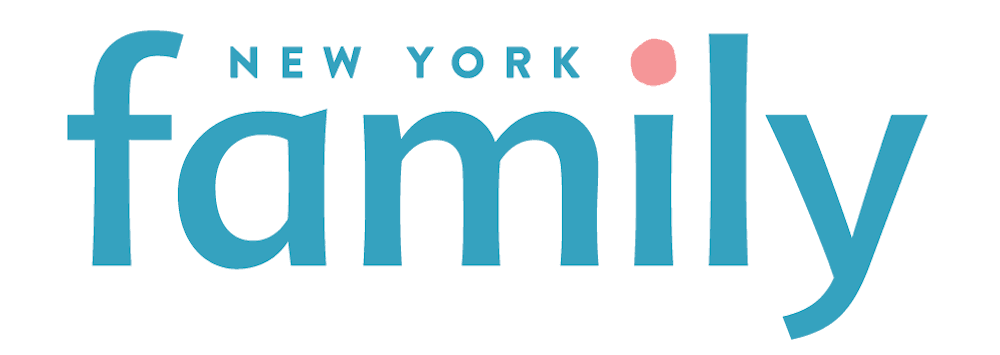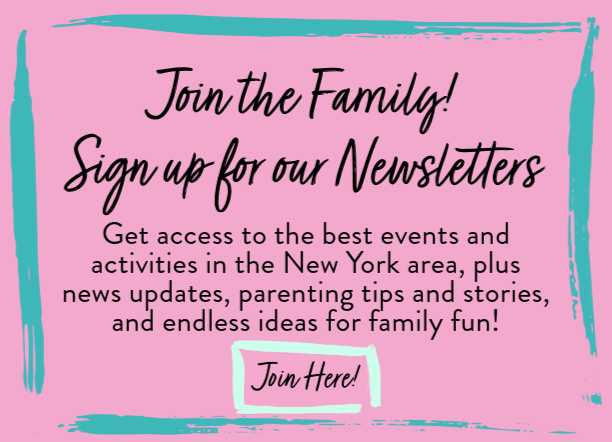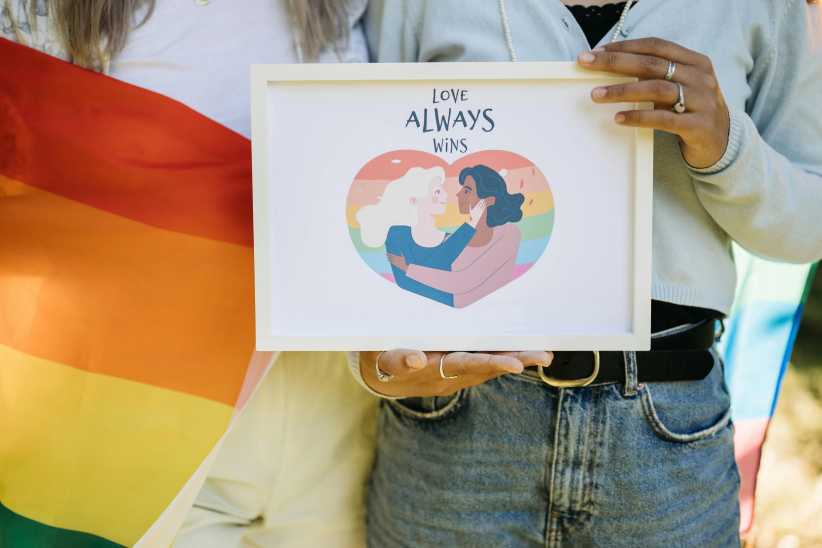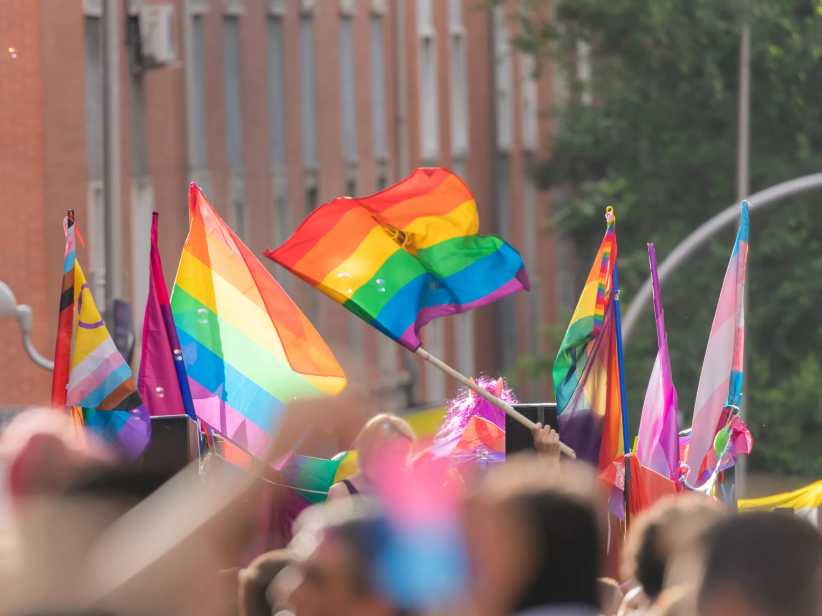
A Parent’s Guide to Supporting LGBTQ+ Children: What To Do When Your Child Comes Out
Although June is a time to celebrate identity, visibility, and acceptance, these values matter every day of the year. Many of those taking the courageous step to come out are children and teens navigating their identities while seeking understanding from the adults they trust most: their parents.
Around 3.2 million children in the US between the ages of 8 and 18 identify as LGBTQ+, representing up to 9% of American children, according to the Movement Advancement Project (MAP), an independent, nonprofit think tank that provides research and insights that promote equity and opportunity for all. According to varying studies, NYC’s proportion is considerably higher than the national average, between 14 and 30%. The estimated portion of unhoused NYC teens (40%) and those in foster care (34%) who identify as LGBTQ+ is significantly higher, which should not be overlooked.
A 2023 University of Connecticut study revealed that almost 83% of LGBTQ+ teenagers have shared their identity with at least one immediate family member. However, fewer transgender and gender-expansive youth (44%) are out to all parents or guardians compared to LGBTQ+ youth overall (54%).
NYC—and the United States as a whole—have a significant and growing population of LGBTQ+ children, due in part to shifting social norms and increased awareness. Nonetheless, it has not prevented the significant mental health challenges, harassment, discrimination, isolation, and abuse that LGBTQ+ youth still face every day.
According to The Trevor Project, LGBTQ+ youth are more than four times as likely to attempt suicide as their peers. Having just one accepting, trusted adult reduces that risk by 40%.
Why is coming out important for LGBTQ+ youth?
With the destigmatizing of identifying as LGBTQ+, a cisgender and/ or heterosexual person may wonder if announcing one’s sexual orientation remains a common practice. While each situation is different, generally, coming out can validate a person’s identity, empower them to be their authentic selves, and connect them to the LGBTQ+ community.
“Coming out is important to feel valid in who you are, you are loved for who you are, you are accepted for who you are, and you are celebrated for who you are,” says Marilena Rocco, Manager of Educational Programs for Live Out Loud, a nonprofit organization dedicated to inspiring and empowering LGBTQ+ youth.
Although there has been progress, it may have recently felt like progression has turned into regression. There is still a lot of work to be done. Rocco says, “While society has become more accepting, there is still progress to be made.” Because of this, for many people, coming out represents stepping into a supportive and welcoming community.”
Live Out Loud’s Martine Bowman says there’s value in connecting with people with shared identities. “It’s almost like a built-in family that you gain from being your authentic self,” Bowman says.
It’s also important to remember that coming out isn’t a one-time thing.
“People come out every single day, all the time, in order to be themselves and to be seen,” says Clark Hamel, educational programs manager for PFLAG. “So coming out for the first time is a process that opens that door.”
In many cases, the first people that LGBTQ youth come out to are trusted adults—often parents.
“It’s an honor to be trusted with that information when it’s first being shared,” Hamel says. “For most LGBTQ people, especially young people, they’re doing it with someone that they trust, that they love, that they want to share this information with in order to open that door to the rest of their life.”
What should you say if your child comes out?
For whatever reason, you may be surprised or caught off guard when your child comes out to you. But you can (and should) still be supportive of your child, even if you’re struggling with acceptance for religious or cultural reasons, because it’s unexpected, because you don’t understand, or for another personal reason.
Your reaction can have significant implications and a lasting impact, so—no matter what you say—it is imperative to communicate love, support, and receptiveness. There are some things to keep in mind if you’re having trouble coming up with the right response.
Responding with “Thank you for trusting me enough that you felt you could share this with me. I am sure that wasn’t easy to do,” acknowledges the magnitude of the announcement, and the courage it takes to share something so vulnerable. Hamel says, “Saying thank you shows a gratitude that they have your trust in the first place.”
It is important to keep in mind that many LGBTQ+ children fear rejection, even if their parents are accepting. Affirming your love by saying something like, “I love you no matter what,” validates your unconditional love and support, and helps your child feel safe.
Asking questions shows you are open and willing to learning, even if you don’t understand in that moment. Replying with “I hope it is okay if I ask some questions,” or asking if there are things you can do to better support your child shows your commitment to supporting them.
Commit to being an ally by saying something positive, like “I am here for you no matter what,” can build trust in your relationship, and it tells your child that you’re someone they can feel safe turning to.
This is often a confusing time in the life of any child; adolescents are still forming their identities, so it’s important not to dismiss them because they’re too young, ask “are you sure?” or tell them “you’ll grow out of it, it’s just a phase.” As their parent, you are likely the first person they’re disclosing this information to, and your reaction can play a significant role in how safe your child feels sharing with others.
It’s important to build an environment where your child feels safe to express themselves long before they begin thinking and having conversations about their identity. You can help foster an inclusive environment by normalizing the LGBTQ+ community, and other communities different than your own, in your home.
When kids are raised in an inclusive environment where differences are normalized, they may feel more comfortable broaching the topic of their sexual identity. “When that conversation does happen, it might not be so much of a surprise,” Bowman says. “It’s just a natural conversation that happens.”
Living in a more progressive, LGBTQ-affirming place like NYC doesn’t automatically translate to a feeling of safety. Even right here at home, LGBTQ-identifying youth may continue to face ignorance, discrimination, bullying, and harassment. When they’re seen and accepted for who they are in the one place that should feel the safest—at home—they’ll be empowered, to face the world with confidence.
What to do if you’re still having trouble processing the news?
While you may try to be accepting of your child who just came out, having a child come out can bring on an onslaught of emotions. You may feel confused, disappointed, or even concerned. First and foremost, it’s essential to be honest with your emotions and what you’re feeling. This will allow you to process your feelings without negatively affecting your child.
“If there are these emotions of confusion or grief or sadness, a darker emotion than overall acceptance,” Rocco says. “Absolutely, go through that grieving process, but not in front of your child.”
Remember that your child is still the same child that you love. “You’re just learning something new about them,” Rocco says. “And learning it is an honor they’re telling you, and it comes from a place of love.”
Parents might be overwhelmed by this new information because they don’t know a lot about the LGBT community. But, even if you don’t fully understand, it’s imperative to make an effort to affirm your child in a positive way to ensure they’re growing up in an environment where they can thrive and be themselves. It may also be helpful to do research and talk to other people who have children in the LGBT community.
“It’s okay if a parent doesn’t fully understand what’s happening right away, but it is so important to do that research, to connect with other people, other LGBTQ+ parents, other parents of LGBTQ+ children,” says Eli Dunn of Live Out Loud. “And building that social community can be really helpful.”
“Coming out to you, the parent, happens that one first time, but for that young person, they’re continuing to come out to other people in their life and express their identity for the rest of their life,” Hamel says. “So continuing to support verbally and express that affirmation throughout their life is really key.”
Reaffirming this support can take on a variety of forms. Do your own research and come to your child with questions to show that you’re interested in them and their identity. See if there’s a community, like a Gender & Sexuality Alliance (GSA) in your child’s school, that your child can join, attend family-friendly pride events together, and engage in things that interest your child. What is most important is that your child knows they are loved.
It is important to note President Trump’s recent executive order to eliminate “gender ideology” from federal materials, which has resulted in the erasure of vital information, resources, and support for LGBTQ+ individuals. This action could have severe ramifications, including reduced access to mental health resources and information regarding legal protections, difficulty finding safe spaces and communities, inadequate support for those most vulnerable, and increased feelings of isolation. Eliminating these government resources creates significant barriers for LGBTQ+ youth seeking support, information, and validation, potentially harming their mental and emotional well-being while conveying a dangerous message.
For those seeking supportive and accurate resources that advocate for LGBTQ+ children, helpful information can be found here:
- Advocacy Tools (PFLAG)
Offers tools and tips for advocating for LGBTQ+ rights at the local, state, and national levels, tailored for parents, families, and allies. pflag.org/resource/2025-advocacy-10-minutes/
- Supporting LGBT+ Youth: Coming Out (Live Out Loud)
Guidance for parents and educators on how to support youth during the coming out process, with personal stories and actionable advice.
- Resources for Parents (Live Out Loud)
A collection of resources, videos, and reading materials for parents supporting LGBTQ+ teens, with a focus on empathy and affirmation.
- Resources for Families of LGBTQ+ Youth (Child Welfare)
Provides research-based tools and guidance to help families understand and support their LGBTQ+ children, especially in child welfare contexts. - LGBTQ+ Student Resources (GLSEN)
Provides guidance and tools to help students, educators, and allies start and sustain Gender & Sexuality Alliances in schools, creating safe and inclusive spaces for LGBTQ+ youth.
Psst… Check Out 16 Books to Read During Pride Month (and Year Round!)














